If you manage a team today, you already juggle three big things.
Getting real work done. Protecting company data. Keeping people happy and focused.
Employee monitoring software helps you see where time goes, what tools people use, and where workflow friction lives.
When used with clear policies and respect for privacy, it becomes a coaching tool rather than a surveillance tool.
Think of it as a fitness tracker for your workday. You get signals that help you improve habits, distribute load fairly, and reward outcomes.
In this article, we are going to discuss the 10 best employee monitoring tools to improve productivity.
Let’s first discuss why businesses need employee monitoring software.
Why do businesses need employee monitoring software?
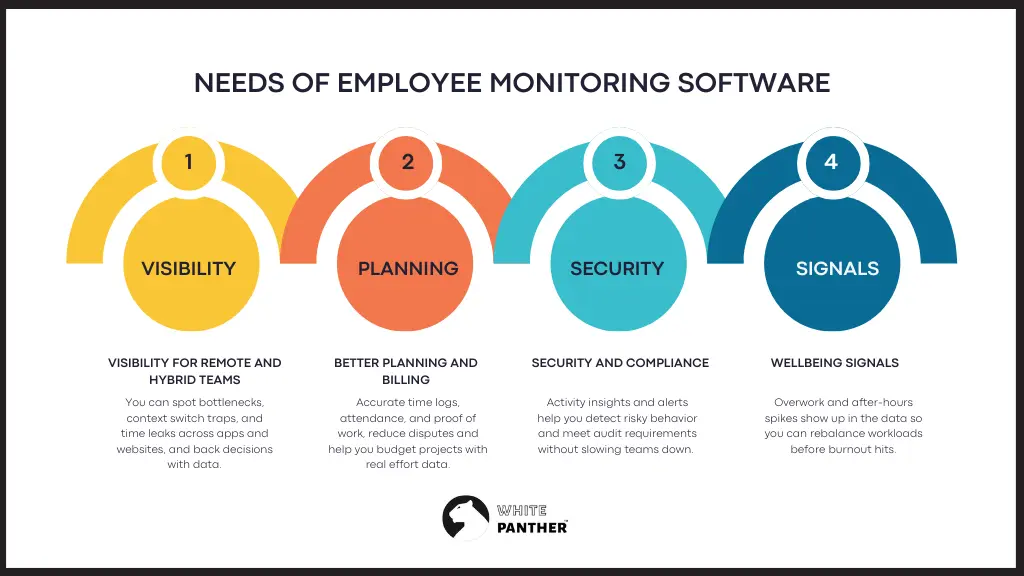
Monitoring is not about catching people out. It is about understanding how work actually happens so you can improve it.
- Visibility for remote and hybrid teams: You can spot bottlenecks, context switch traps, and time leaks across apps and websites, and back decisions with data.
- Better planning and billing: Accurate time logs, attendance, and proof of work, reduce disputes and help you budget projects with real effort data.
- Security and compliance: Activity insights and alerts help you detect risky behavior and meet audit requirements without slowing teams down.
- Wellbeing signals: Overwork and after-hours spikes show up in the data so you can rebalance workloads before burnout hits.
Top 10 employee monitoring software to boost productivity
1. WhitePanther
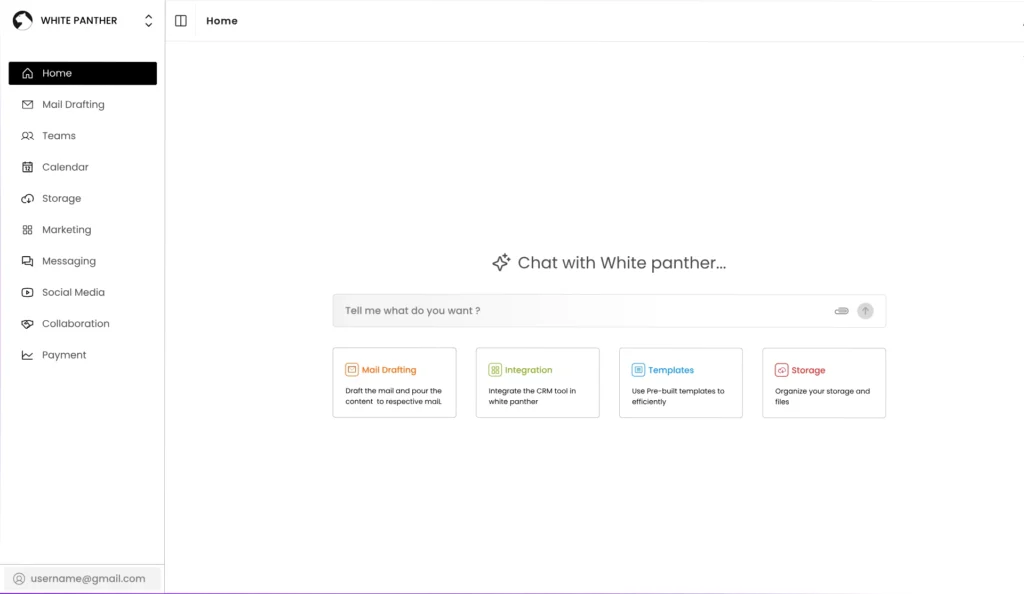
WhitePanther is not a typical monitoring tool. It is a unified workspace that brings tasks, email, meetings, calls, time tracking, screen recording, and more into one fast dashboard with no tab hopping and no reloads. That integrated environment means less context switching and cleaner data. When your timer, tasks, messages, and docs live together, the picture of productivity is richer and coaching becomes easier.
Key features
- Time tracking that sits right inside the same screen as tasks and messages
- App and website insights so you can understand focus patterns without leaving the workspace
- Screen recording for walk throughs and async updates that reduce meetings
- Meeting and call timelines linked with tasks to see where collaboration time goes
- Smart notifications that nudge action instead of adding clutter
- In place AI helpers to summarize threads and draft updates
- A single dashboard that removes tool juggling and gives managers one source of truth
2. Hubstaff
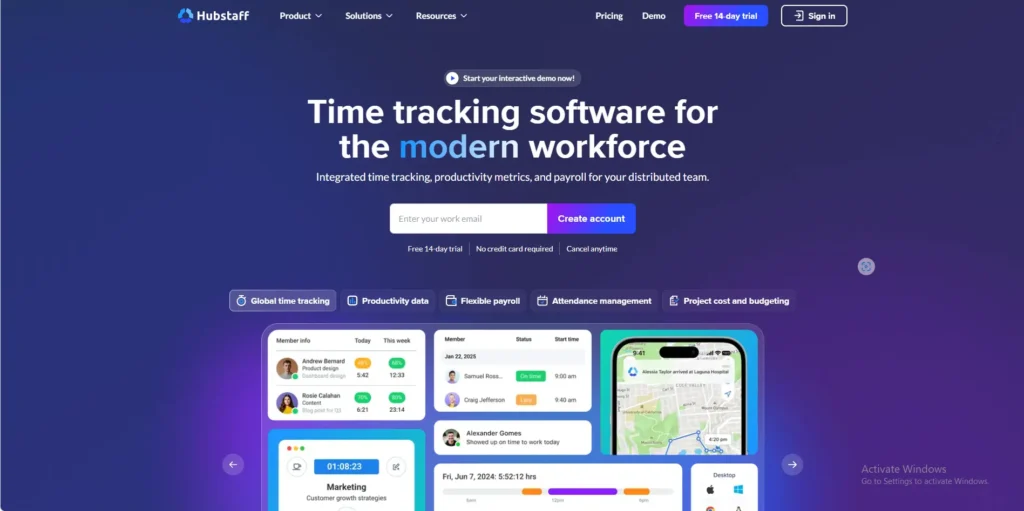
Hubstaff focuses on time tracking plus evidence of work. It adds optional screenshots, activity levels, website and app usage, attendance, and payroll, which is a strong mix for operational teams that bill clients or handle field work.
Key features
- Time tracking across desktop, web, and mobile
- Optional screenshots and activity metrics for proof of work
- Website and app usage with productive and unproductive categorization
- Attendance, scheduling, and paid time off tracking
- Payroll and invoicing based on approved hours
- Project budgets and cost reporting
3. Teramind
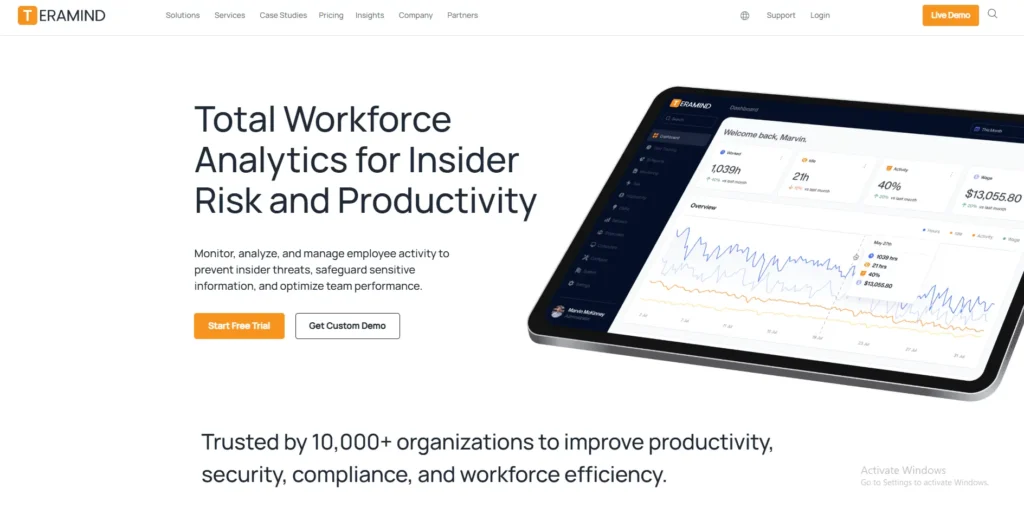
Teramind blends monitoring, analytics, and data protection. It can live view screens, replay past activity, and raise alerts on risky behavior. That makes it attractive in regulated or security sensitive environments where insider risk matters.
Key features
- Live view and historical playback of user activity
- Policy rules and alerts for risky actions
- Application and web monitoring with detailed context
- Content analysis and data loss prevention options
- Productivity analytics with trend views
- Role based privacy controls
4. ActivTrak
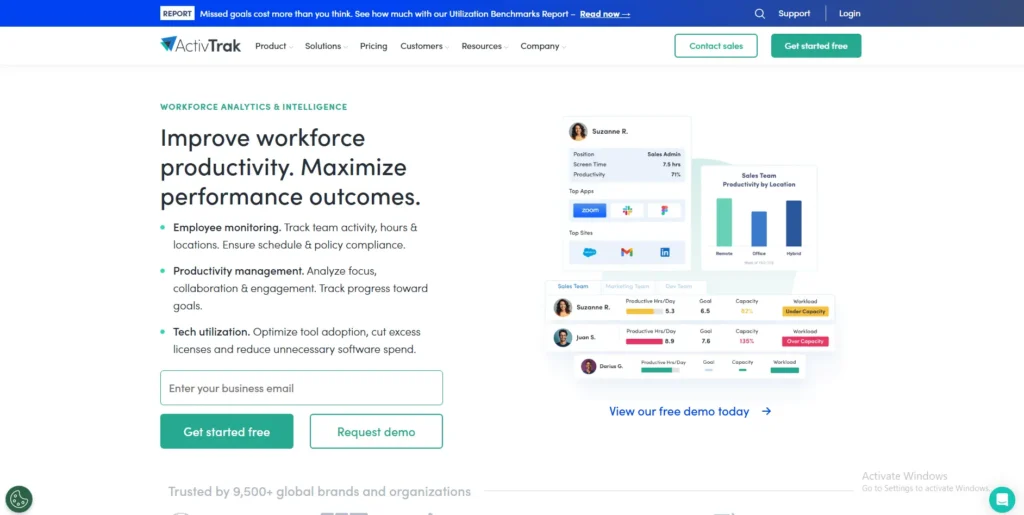
ActivTrak positions itself as workforce analytics more than surveillance. It measures work patterns, focus time, and capacity to help leaders coach teams and set healthier expectations, with privacy choices that remove sensitive data.
Key features
- Productivity and focus insights rather than raw keystrokes
- App and website usage with context
- Workload and capacity views for fair distribution
- Coaching tips from benchmarked data
- Privacy minded defaults with no camera or personal device tracking
5. Time Doctor
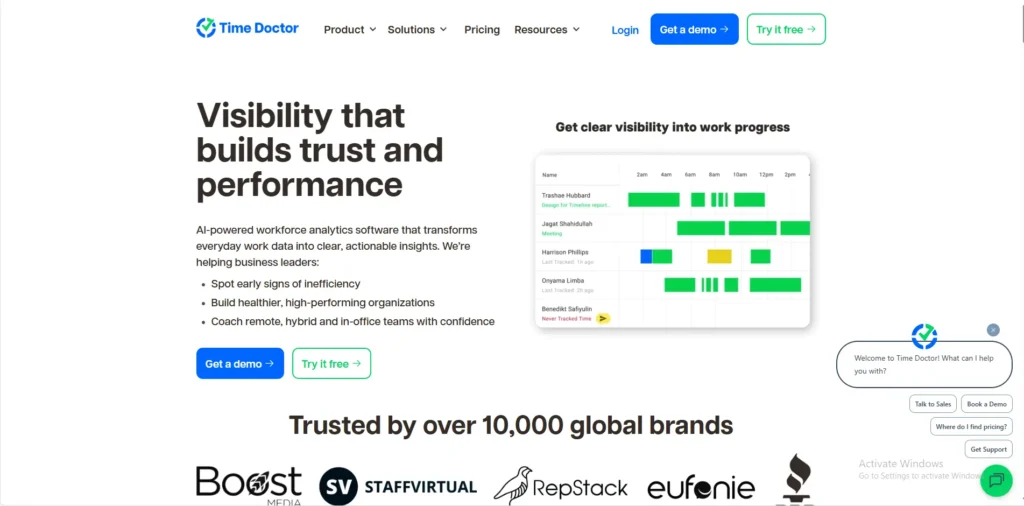
Time Doctor gives managers visibility with project-based time logs, optional screenshots, and web usage tracking. It is popular with distributed teams that need accurate billing and want to reduce distraction without micromanaging.
Key features
- Project and task-based timers with approvals
- Optional screenshots and app or website usage
- Distraction alerts to bring people back on task
- Detailed reports for clients and internal audits
- Payroll exports that match approved time
- Break tracking and workload signals
6. Insightful
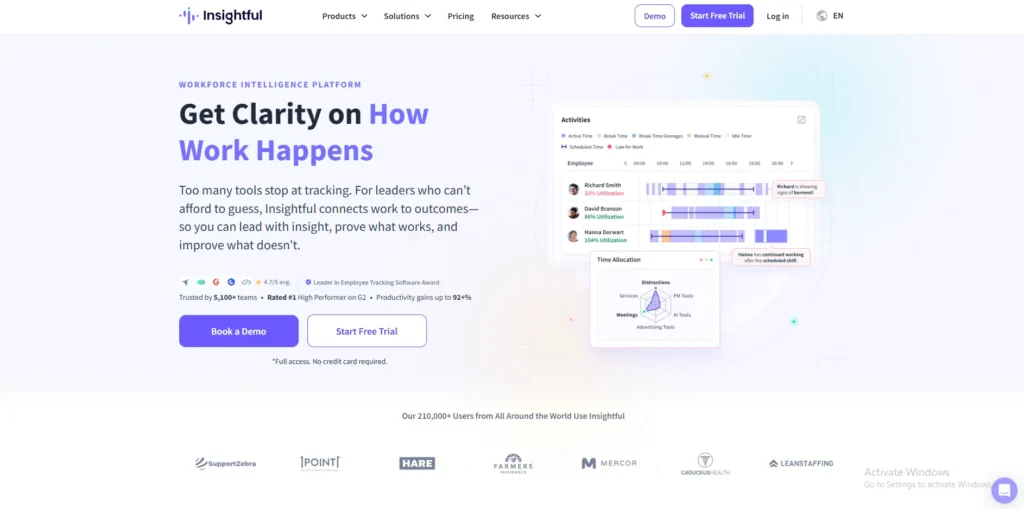
Insightful, formerly Workpuls, focuses on workforce intelligence. It tracks attendance from device activity, connects time to payroll, and turns app usage into cost views, so finance and operations can see the true price of context switching.
Key features
- Automatic clock in and out from computer activity
- App and website analytics tied to labor cost
- Scheduling and attendance with idle handling
- Team and role level dashboards
- API access for custom workflows
- Privacy controls for monitored categories
7. Veriato
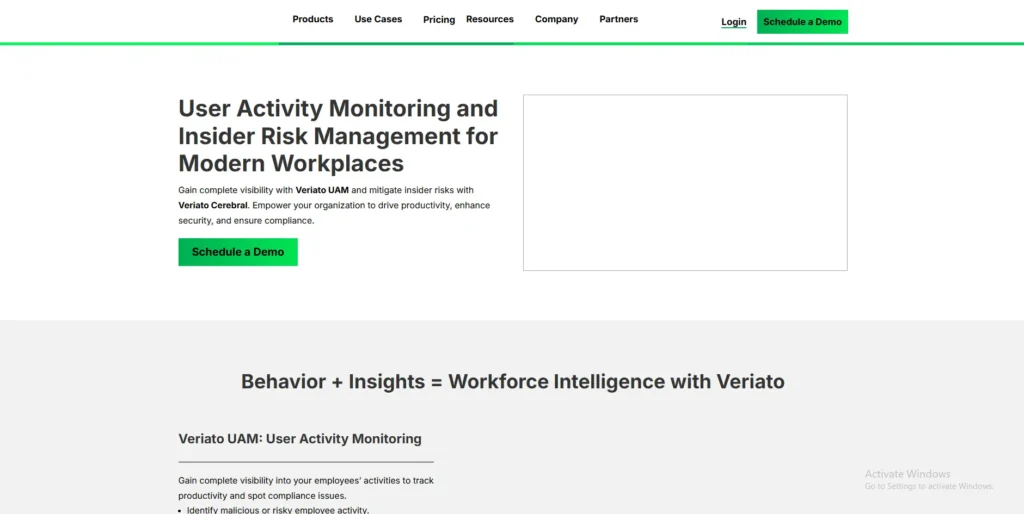
Veriato brings user behavior analytics to monitoring. It watches many activity signals and uses risk scoring to surface unusual patterns. That combination is useful where insider threats and compliance are critical.
Key features
- Broad activity coverage across email, chat, web, files, and network
- AI risk scoring and anomaly detection
- Screen capture and playback for investigations
- Compliance ready audit reporting
- Productivity analytics with trend lines
- Hybrid work monitoring across locations
8. DeskTime
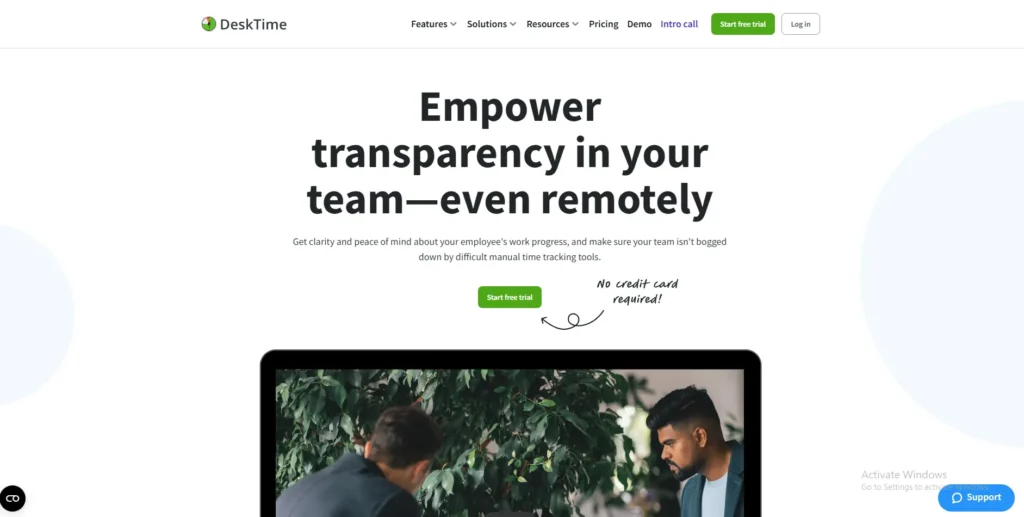
DeskTime emphasizes automatic tracking. It classifies apps and websites, takes optional screenshots, and offers private time for personal tasks, which can ease adoption in teams that care about trust and balance.
Key features
- Automatic time tracking that starts with device use
- App, URL, and document title tracking
- Optional screenshots for visual context
- Reporting and daily productivity scores
- Scheduling and shift planning
- Private time toggle to pause tracking
9. InterGuard
InterGuard is a fully featured suite that covers productivity, browsing, screenshots, alerts, and remote device controls. It is often chosen by companies that need strong oversight across many device types.
Key features
- Central console for user activity data
- Website and app usage with policy alerts
- Screenshot capture rules
- File movement and USB tracking
- Remote device controls for offboarding
- Report automation for managers and auditors
10. SentryPC
SentryPC is frequently rated for deep endpoint coverage, including key logging and extensive capture options, which can be valuable in high control environments. Choose it only with clear policies and consent, since it records sensitive signals.
Key features
- Keystroke logging with search
- Screenshots on intervals and triggers
- Chat, clipboard, and USB monitoring
- Web filtering and application blocking
- Time limits and scheduling per user
- Cloud console for multi device control
- Alert rules for policy violations
How WhitePanther stands out in day-to-day work
Traditional monitoring stacks are patchwork.
One app for time, one for tasks, one for email, one for meetings, one for calls.
Data lives in silos, and you still spend half your day switching tabs.
WhitePanther compresses that whole loop into a single view.
You can start a timer while opening a task, reply to an email without losing your place, record a quick screen update instead of booking a meeting, and see how the entire day shaped up on one timeline.
That is the difference between watching work and improving it.
Tips for rolling this out with your team
- Write a simple policy that explains what you track and why.
- Turn on the minimum features that answer your key questions.
- Share dashboards with the team so everyone sees the same truth.
- Use the data to coach outcomes, not minutes.
- Review alerts and reports on a set of cadence and adjust.
Conclusion
Employee monitoring software pays off when it reduces guesswork and improves outcomes.
If your goal is better planning, healthier workloads, and fewer status meetings, pick tools that show context, not just activity.
WhitePanther gives you that context because the work happens in the same place as the measurement. The rest of the tools here are strong options for different needs, from security heavy use cases to lightweight analytics.
Start with a clear policy, involve your team, and let the data help you coach rather than control.
